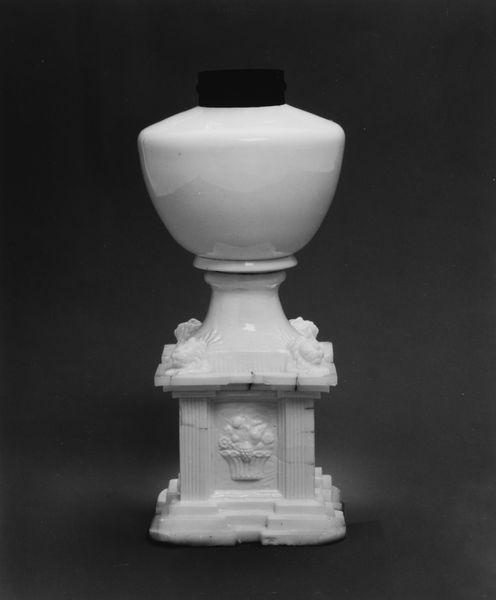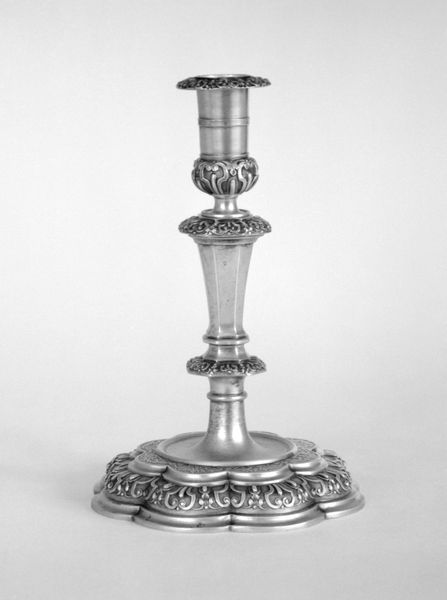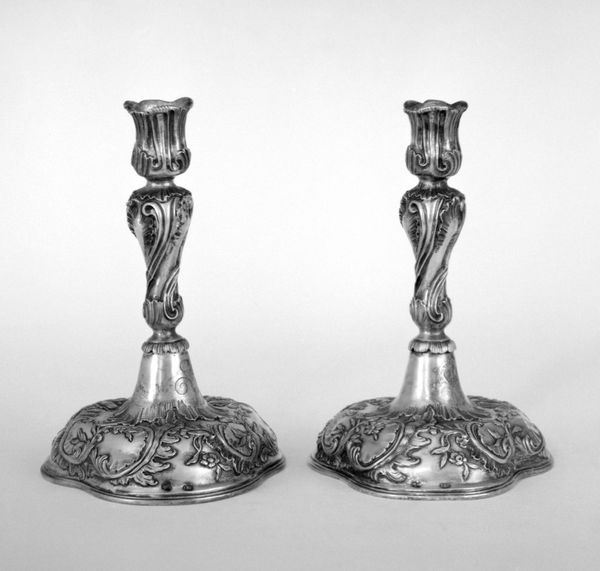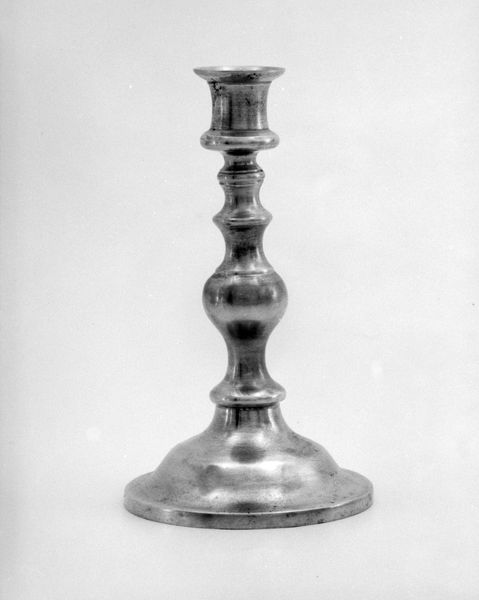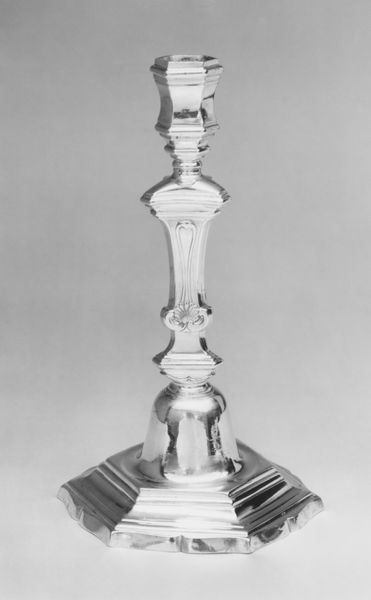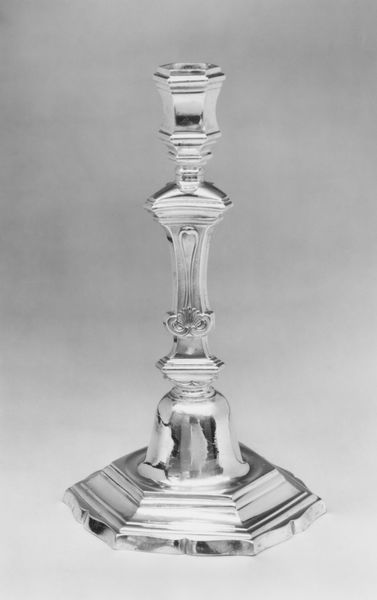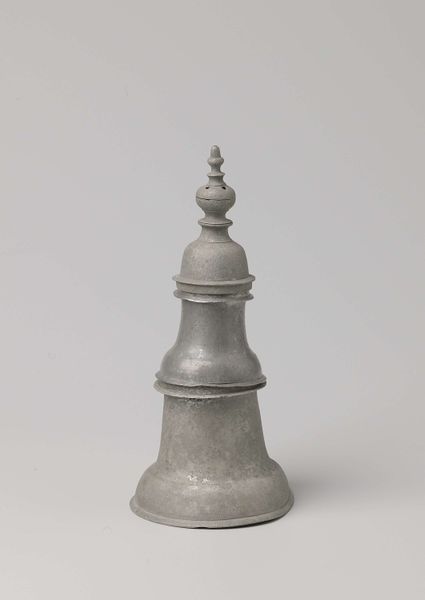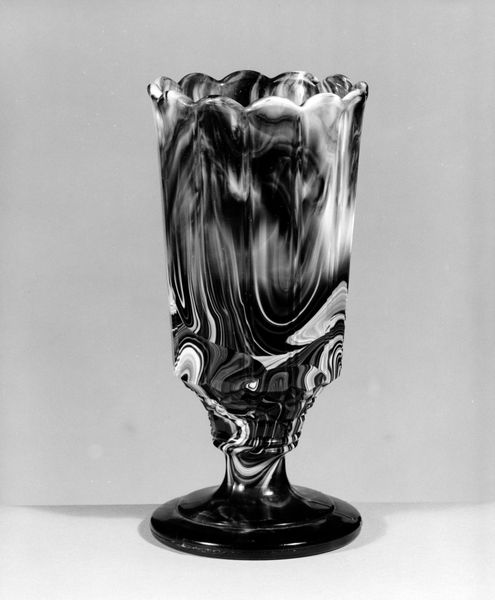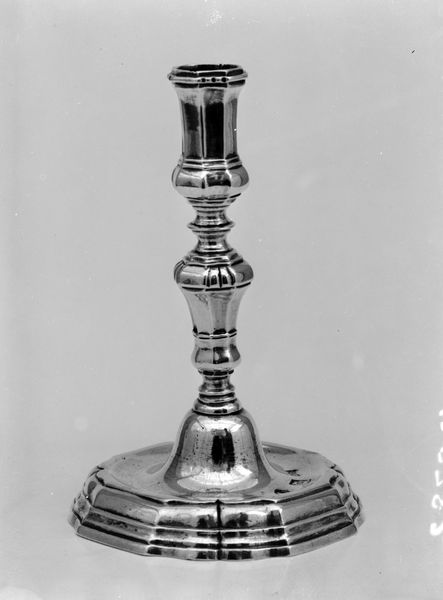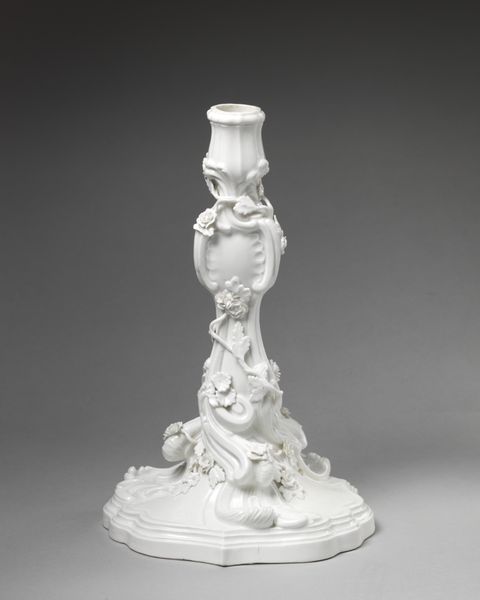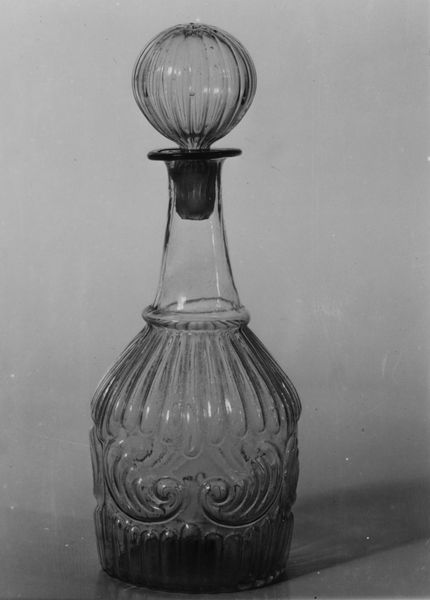
Dimensions: H. 9 5/8 in. (24.4 cm)
Copyright: Public Domain
Editor: Here we have a marble Candlestick, created between 1870 and 1875 by Henry Whitney. The figure holding the candlestick looks quite delicate, almost ethereal in this monochrome. What's your take on this piece? Curator: This Candlestick offers an intriguing glimpse into the cultural aspirations of the time. We see the neoclassical style, very popular in the 19th century, employed in an object intended for domestic use. How do you think that positioning of high art impacted society? Editor: I imagine it would have brought an air of refinement and culture into the home, perhaps a way to elevate everyday life through art. Do you think this piece has any political implications? Curator: Absolutely. Consider the social context. After the Civil War, there was a widespread effort to project an image of unity and cultural sophistication in the United States, particularly on the world stage. Neoclassical art, with its references to ancient Greece and Rome, signaled a connection to established Western traditions and ideals of democracy. Editor: So, this candlestick isn't just a functional object; it's making a statement? Curator: Precisely. It’s a material expression of cultural identity and aspirations, revealing how art served a crucial role in shaping and reinforcing social values during a period of immense change. How does viewing it through this lens change your perception? Editor: It definitely adds a layer of meaning I hadn't considered before! I was initially drawn to its aesthetic qualities, but understanding its cultural and political context makes it even more interesting. Curator: Exactly! By understanding art’s interaction with society, we come closer to truly appreciating what its presence in society can create.
Comments
No comments
Be the first to comment and join the conversation on the ultimate creative platform.


